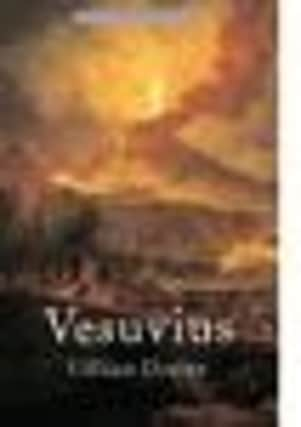Book review: Vesuvius by Gillian Darley


While the giant sleeps, its lower slopes are covered in a shabby collection of derelict bars, kiosks and cafes, fly-tips and a broken funicular train track.
But, as history has proved, appearances can be cruelly deceptive; despite recent media attention on ash clouds drifting from Iceland, Vesuvius is still the most famous and now dangerously underestimated volcano in the world.
Advertisement
Hide AdAdvertisement
Hide AdGillian Darley’s entertaining and scholarly study of what Dickens called ‘the genius of the scene...biding its terrible time’ takes us back through centuries of history, from rebel slave Spartacus famously hiding in the volcano’s crater to Silvio Berlusconi’s working model, complete with smoke and artificial earth tremors, at his villa in Sardinia.
She paints a vivid portrait of the volcano’s towering presence, adding extra colour and verve to its fascinating history and paying particular attention to its influence on European culture.
Temperamental and atmospheric, Vesuvius has been an obsession for many, whether it was Pliny the Elder who watched the cataclysmic AD79 eruption as others fled, and died when he was overcome by the fumes, or the German polymath Athanasius Kircher who had himself lowered into the crater in a basket and beheld there ‘the habitation of Hell’.
The Greeks and Romans considered Vesuvius a sacred place, mainly because of the incredible fertility of its slopes, but it was not until the Enlightenment that serious, scientific studies were launched into the phenomenon of volcanic activity.
Advertisement
Hide AdAdvertisement
Hide AdIn 1717 Anglo-Irish philosopher George Berkeley witnessed the volcano in action and had to run for his life when he came perilously close to the ‘river of fire’ and nearly 100 years earlier English poet John Milton used a visit to Vesuvius as inspiration for the Palace of Pandemonium in his epic poem Paradise Lost.
The volcano’s most influential admirer, however, was 18th century British ambassador William Hamilton, whose second wife Emma became the famous lover of a certain Horatio Nelson.
Hamilton, a man of considerable intellect, saw a small eruption in 1765 and was instantly and irrevocably smitten, escorting countless visitors to the crater and sending back reports of its activities to the Royal Society in London.
‘Vesuvius was the making of the man; and he was the man who made Vesuvius,’ remarks Darley.
Advertisement
Hide AdAdvertisement
Hide AdOver the centuries, Vesuvius has been speculated upon, feared, and celebrated by writers and artists and hordes of visitors. Every time it shuddered, its popularity as a tourist destination soared.
Since the last big eruption in 1944, rampant development has overtaken the lower slopes. They ‘await a natural catastrophe on a quite unimaginable scale’, warns Darley. ‘The only uncertainty is when.’
(Profile, hardback, £15.99)